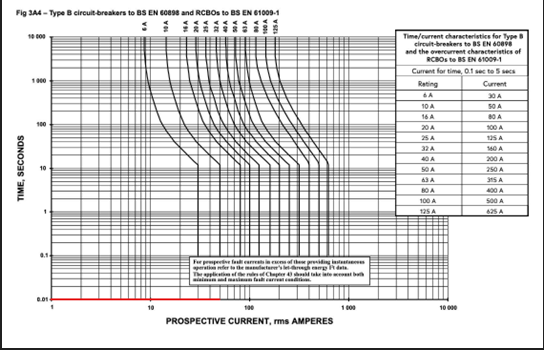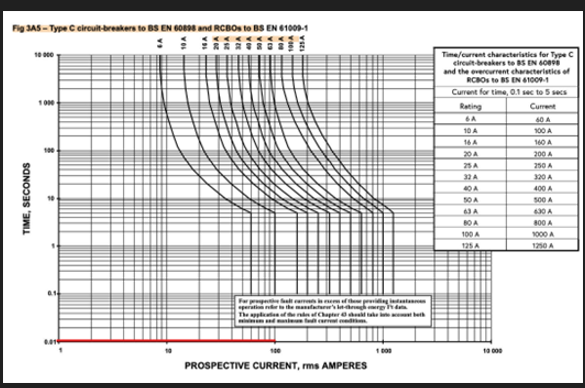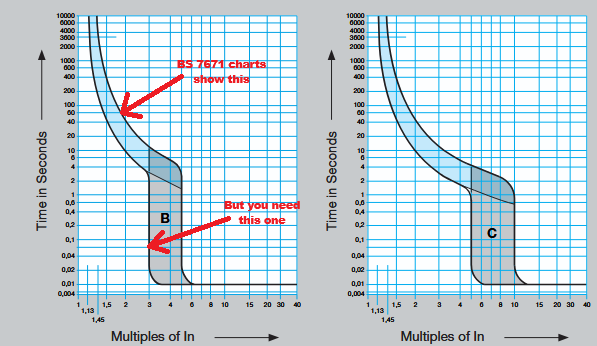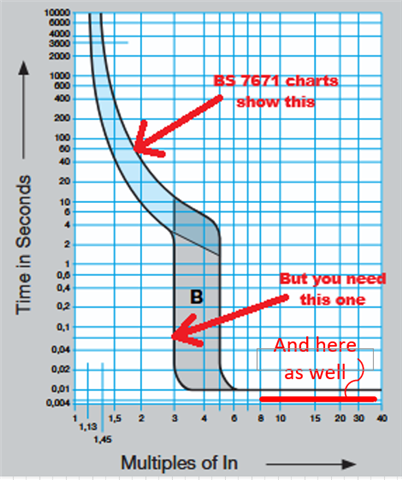I have searched and found some similar threads on this topic, which give me some guidance - most of which says there's no definitive way to assess this, but if the learned community here can check my thinking that would be helpful.
We are providing some LED fitting drivers from ETC to the electrical contractor on a theatre project. These are DMX controlled, and have a maintained (externally backed-up) supply connection and a sense connection. If the supply at the sense connection fails they force the output to full brightness - but still fed from the maintained supply. There is no local battery.
The contractor has asked how many of these could be put on a 10A Type B or type C MCB (let's assume to IEC 60947 as this is not a domestic environment). Let's also assume we are looking to avoid the breaker tripping due to surge currents on switch-on or reset. The manufacturer states that the inrush current is 27A within the first half cycle,
A type B MCB will fast trip at 3-5x In, and a Type C will fast trip at 5-10x In. If we take the lower end of these figures to 'guarantee' no tripping, then we would be limited to an inrush current of 30A (1 driver) for a type B and 50A (2 drivers) for a type C. This is just by my simplistic maths, and assumes that the inrush lasts long enough (10ms or so) for the breaker to trip. We don't have a current-time curve from the manufacturer although we have asked for it, and also for their assessment of the number of drivers that could be put on each MCB type.
I'm sure I'm missing something here - possibly more detail on the time component. if the inrush is 'very short' how 'short' would it need to be for the breaker not to really care about it? What else am I missing in the simple view I'm taking?
Thanks in advance.
Jason.



